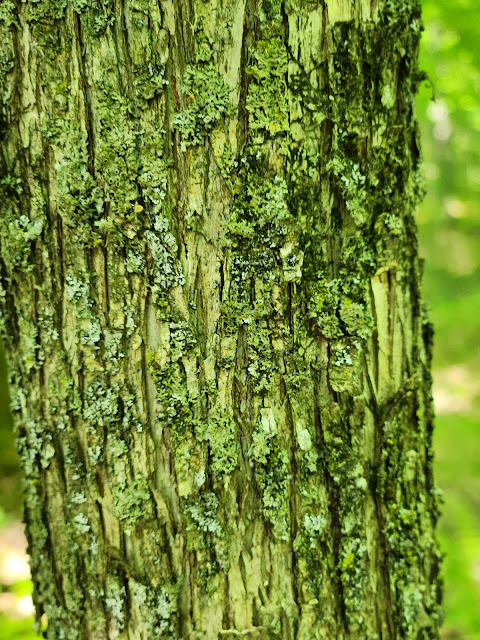An Exploration of the Chequamegon Hardwoods State Natural Area and Mineral Lake State Natural Area
By guest contributor and collections volunteer, Jan Sharp.
Wisconsin is home to many natural wonders, including our 687 State Natural Areas throughout the state. These areas were established to protect specific types of habitats, rare plants, and key geological areas. These areas are the last vestiges of many of the original Wisconsin ecosystems that have either not been greatly affected by humans or have recovered to nearly their original state.
As one of the museum’s volunteer collectors for the herbarium, a collection of dried plants, I have wondered how the plant communities differed between the Mineral Lake State Natural Area and the Chequamegon Hardwoods State Natural Area. The two areas seem very similar and are only a few miles apart. Both are mature sugar maple hardwood forests with yellow birch, basswood, and hop hornbeam tree species, among others. No forest management, such as logging or human development, is to occur in these areas, other than the removal of invasive species that impact native populations of plants and animals. Scientific collecting is allowable with prior written approval. The Museum obtained the necessary permits for me to collect and press specimens for its herbarium and off I went to collect and compare the two areas.
Both areas had mature trees and woodland wetlands. Mineral Lake SNA is much rockier than Chequamegon Hardwoods SNA. The trees seemed larger and more dispersed in Chequamegon Hardwoods SNA, whereas in Mineral Lake SNA they were smaller and crowded together. Many of the early ephemeral plants were the same for both areas: Carolina spring beauty, trout lily, marsh marigold, and starflower. Some of the understory was different. More ferns grew in Mineral Lake SNA and more leatherwood and other shrubs in Chequamegon Hardwoods SNA.
As spring progressed and plants started to bloom, more differences appeared. Chequamegon Hardwoods SNA had comparatively lots of smaller vegetative-phase plants. It was as if the bigger trees were very possessive of their nutrients. The understory was not thriving as I expected. Whereas the spot at Mineral Lake SNA seemed to thrive in better light with smaller trees.
I started wondering why that was, and immediately became overwhelmed as I realized it would be a very complex question to answer. So, my mind shifted. Rather than try to make a strict scientific comparison, my brain and my heart focused on the little things I’d never seen before, and the things I had, but now with a much closer lens.
 |
| Leatherwood (Dirca palustris), a native shrub often found in the undergrowth of Northwoods forests, has some of the earliest spring flowers. Photos by Jan Sharp. |
The first flowers to appear in the understory before the trees leafed out were the twin tubular, yellow flowers of leatherwood, a wiry shrub of the undergrowth at the Chequamegon Hardwoods SNA. There were little sticks out of the ground with flowers on their tips. Later, those twigs would have tree sized oval leaves only at the ends. And what’s this? Some leaves with bright yellow circles of fungus? Or eggs? What is that?
 |
| Shinleaf (Pyrola spp.) is in the same family as the common, easily-recognizable wintergreen (Gaultheria procumbens). Photo by Jan Sharp. |
Later, the flower of shinleaf, a very common member of the Heath family, caught my eye. On close inspection, it appeared to be the pipe-smoking farmer wearing her petaled hat, all waxy white and orange. Is she sticking her tongue out at us?
 |
| Several to dozens of species of lichens may grow on the same substrate. The Museum is currently working to enhance our collection of lichen samples. Photo by Jan Sharp. |
Then, the lichens caught my eye. One older hop hornbeam was covered in pom-pom shadow lichen. When I looked at the picture later, I wondered why it looked so green. Everything was green. I didn’t remember that. What happened to my camera settings? OH! The light in the woods IS only green! That’s all that made it through the tree canopy – the wavelength the leaves don’t use to photosynthesize. Everything was awash in soothing green to the human, starving green for the understory.
And then came the interrupted fern, named for interrupting the development of its own pinnules to form smaller, fertile, spore-producing organs midway up the stipe (stem). This particular specimen had an interruption in the interruption: stunted pinnules where spores should have developed. This interrupted fern, in interrupting itself to make spores, further interrupted itself!
By the end of summer, I realized I had abandoned the standard scientific approach, but for something more rewarding and interesting. Each plant had a story that shed light on a bigger story at play. And the unexpected was always around the corner waiting to be discovered.
I can’t wait for Spring and more small adventures in those woods.

